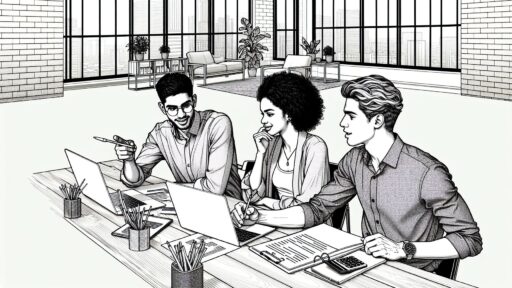If you’ve ever felt the sting of defeat when your lush green lawn suddenly sports patches of brown, you’re not alone. I’ve been there too. One of the most common culprits? Poa injury. This pesky problem can turn a gardener’s dream into a nightmare but don’t worry; I’m here to help.
Understanding poa injury isn’t just about knowing what it is, but also recognizing how it impacts your yard’s health. It’s a topic that’s often overlooked, yet essential for maintaining a vibrant, healthy lawn. So, let’s dive into the world of poa injury, and together, we’ll turn that brown lawn back into a green paradise.
Understanding Poa Injury
In our quest to restore our lawns to their lush green splendor, an indispensable step is understanding poa injury. Let’s delve deeper into what it is and the common causes behind such damage.
What is Poa Injury?
Poa injury denotes damage incurred by poa grass species, like poa annua. These species commonly find a home in lawns and gardens across America. The injury often manifests as brown patches or spots scattered across your otherwise green lawn.
Common Causes of Poa Injury
Various factors can inflict poa injury, particularly weather elements and pests.
- Temperature Extremes: Poa grasses primarily experience damage during times of temperature extremes, specifically high heat or freezing conditions.
- Inadequate Watering: Overwatering or underwatering the lawn can also result in injury to poa grass.
- Pests and Diseases: Pests like billbugs and pathogens like Pythium Blight are common culprits behind poa injury. For example, the Kentucky Bluegrass billbug in the larval stage feeds on the grass root system, tainting your lawn with its damaging effects.
- Inadequate Mowing: Incorrect mowing practices, such as cutting the grass too short, can lead to undue stress and, subsequently, poa injury.
By being mindful of these factors, we can devise effective strategies to combat poa injury and restore our lawns to their optimal health.
Identifying Symptoms of Poa Injury
Let’s delve into the symptoms of poa injury closely, to pinpoint the telltale signs and help stop the problem before it exacerbates.
Common Symptoms of Poa Injury
Identifying poa injury at its early stage can be the difference between a lush, verdant lawn and a patchy brown field. The most common signs point to this particular type of injury:
- Brown Patches: Lawn grass turns into a light brown color, often in irregular patches, where poa annua takes hold.
- Wilting Grass: Grass blades start to wilt, lose their vigor and become limp.
- Leaf Spot: Small, circular, dark-colored spots appear on grass blades — these usually signify disease brought on by Poa.
It’s crucial to keep an eye out for these symptoms. Spot them early, nip them in the bud before your lawn turns into a desolate patch of brown.
When to Seek Medical Help
Managing poa injuries requires considerable knowledge and expertise. Should symptoms persist even after treatments, consider these indications to seek professional aid:
- Persistent Brown Patches: Brown patches can be stubborn if left unattended for long. If they spread or persist, seek professional help.
- Worsening Disease: Despite your best efforts, the state of your lawn worsens, the diseases fester and compound.
- Ineffective Pest Control: If the pest population, like billbugs, isn’t decreasing with your current practices, a professional might be what you need.
Remember, inviting expert intervention can help diagnose issues accurately, provide a comprehensive treatment plan and give your lawn the optimal chance to blossom into a beautiful, lush green carpet.
Diagnosis of Poa Injury
A comprehensive diagnosis of poa injury includes several crucial steps. In providing an accurate diagnosis, we can formulate effective strategies to combat and mitigate lawn damage.
Steps Involved in the Diagnosis
Diagnosing poa injury involves a series of steps to conclusively identify the extent and cause of the damage. Initially, it’s a visual inspection of the lawn. For instance, the presence of brown patches could signify poa injury.
Subsequent to the visual inspection, sample collection takes place. Here, undamaged sections adjacent to the damaged areas serve as effective samples, allowing for a comparison that aids in identifying the exact species of poa causing the injury.
Lastly, there’s the laboratory analysis. In this phase, the samples undergo a thorough examination. This technique deciphers between different types of fungus and insects affecting the grass, providing the clear distinction necessary to pin down the precise cause of the injury.
Importance of Accurate Diagnosis
An accurate diagnosis is essential in planning and implementing effective measures to counter POA injury. Misdiagnosis might lead to inefficient treatments, thereby aggravating the damage more than mitigating it.
For instance, if misdiagnosed as Pythium Blight, when the damage is due to pests, pest control measures would be overlooked, leading to severe degradation of the lawn’s health.
Moreover, proper diagnosis provides understanding of the specific poa species causing the issue. This foreknowledge helps tailor advanced pre-emptive strategies, aiming at averting future poa injuries from reoccurring in the same lawn. This knowledge, after all, contributes to maintaining a lush, green expanse of grass that’s delightful to the eyes.
Treatment Options for Poa Injury
Treatment options for poa injury vary, depending on the extent of the damage and the specific cause identified during the diagnosis stage. Here, I’ll discuss conservative and surgical treatments, revealing the best practices outlined by turfgrass experts.
Conservative Treatments
Conservative treatments primarily focus on lawn management modifications and routine chemical treatments designed to nurture and protect your grass from further injury. For instance, you can alter your watering and mowing practices according to the poa species detected in your lawn. Turfgrass managers often recommend a well-balanced fertilizer regimen and a slightly raised mowing height as excellent preventative measures.
As for pests and diseases, they can be effectively controlled with the right chemical treatments. Products with fungicides and insecticides such as Trifloxystrobin and Thiamethoxam prove successful in combating Fusarium Blight and billbugs, amid common pest culprits. Do remember, it’s beneficial to apply these chemicals during early morning hours, when the temperature isn’t high, reducing potential harm to unaffected grass.
Surgical Treatments
In extreme cases where the extent of poa injury seems irreparable through standard management modifications and chemical treatments, surgical treatments might be necessary. Surgical treatments refer to a complete lawn renovation, a process where a significantly damaged lawn is plowed, reseeded, and nurtured back into a healthy state.
The decision to start fresh should be made after meticulous examination of the affected area and consultation with turfgrass professionals. Reseeding with a robust, weed-resistant grass species can significantly increase your lawn’s resistance. Additionally, applying steps like overseeding and core aeration helps in the faster establishment of desired grass species. In grave situations, you might decide to hire professionals to ensure accurate implementation of these extreme remedial measures.
Rehabilitation and Recovery After a Poa Injury
Rehabilitation after a poa injury becomes paramount, another significant aspect in maintaining a healthy lawn. A blend of physical therapy and coping strategies can augment recovery and bring back your lawn’s former glow.
Physical Therapy and Recovery
Physical therapy caters to the lawn’s recuperation, driving its journey from brown patches to luscious green. Whenever I seek physical therapy for my lawn after a poa injury, I focus on a proactive approach. I water the lawn adequately, perhaps 1.5 inches of water every week, catering to the moisture requirement while avoiding overwatering. Aeration becomes another driving force for recovery, improving soil compactness and breathing room for roots. I aerate at least once a year, but the frequency increases based on soil compactness.
Pending specific lawn conditions, I might also exhibit the practice of overseeding. This process involves spreading grass seed over the existing turf directly, reinforcing the lawn’s vitality by making it thick and impervious to diseases.
Finally, adopting proper mowing practices can play a monumental part in recovery. Rover Mower’s survey identified, “Lawns mowed at 50mm (2 inches) are the healthiest and host to the fewest weeds and pests.” Thus, I maintain my lawn at this preferable height, mowing frequently but removing no more than a third of the leaf blade at a time.
Coping Strategies During Rehabilitation
Coping strategies prepare you to manage any unpredictability during the recovery phase. I maintain a consistent care schedule during rehabilitation, such as set dates for mowing or watering. I document the changes observed in the lawn, tracking its progress meticulously.
Another approach is preparing yourself for persistent brown patches, even after implementing remedies. Patience is critical during rehabilitation, with expectations aligned with reality — recovery won’t happen overnight and may even take several weeks.
The recent surge in online gardening communities can be incredibly supportive during this phase. For instance, Garden Web’s forum on lawns has a thriving community of more than 14,000 members sharing their experiences with lawn diseases and how best to approach them. I’ve found their collective expertise invaluable in coping with the challenges of poa injury rehabilitation.
Tips and Advice for Preventing Poa Injury
Tackling the cure, I now shift our focus to prevention. Preventing poa injury benefits from adjustments in fitness and lifestyle coupled with protective measures for high-risk activities.
Fitness and Lifestyle Adjustments
Physical fitness plays a part in maintaining a healthy lawn. Regular exercise, believe it or not, has its indirect effects on lawn health. As I engage in regular physical activities, I find myself more energized and attentive to my gardening duties. This alertness helps in performing routine checks for early signs of poa injury, such as brown patches, wilting grass or leaf spots. With regards to lifestyle, consistency is vital in preventing poa injury. Regular watering and mowing based on specific lawn demands are key activities. For example, cool-season grasses usually need watering once every 3 days during the summer periods.
Protective Measures for High-Risk Activities
High-risk lawn activities include heavy traffic, over-mowing and improper irrigation. To prevent the probability of poa injury, I identify high-traffic areas and rotate these regions. Diverting traffic reduces stress on the grass and limits the chances of poa species invasion. When mowing, I maintain grass height at about 3 to 3.5 inches. A taller grass height minimizes chances of poa infestation as it shade outs the sunlight required by the poa species to grow. As for watering, I ensure proper application techniques to avoid over or under watering, which can result in lawn stress and increased susceptibility to diseases. For example, I water deeply but less frequently to encourage stronger root growth.
With these tips and strategies, I hope to help fellow gardeners safeguard their lawns against poa injury. Follow them carefully, and enjoy a lush, verdant lawn year-round.
Case Studies and Success Stories
I’d like to dive into instances where battling poa injury turned victories. Looking at case studies and hearing personal stories can provide a unique perspective on how to effectively handle lawn-related issues.
Overcoming Poa Injury: Individual Experiences
One individual, a seasoned gardener from Kentucky, battled poa injury for three consecutive years. He noticed irregular brown spots appearing on his lawn and decided to take proactive measures. The gardener adjusted his watering schedule, ensuring the grass was never left too dry nor excessively wet. Grubs, a common pest in lawns and a contributor to poa injury, were reduced with the use of strategic pest control methods. As a result, over several months, the lawn regained its vitality, demonstrating the effectiveness of conservative care and punctual preventative measures.
Another home proprietor in California grappled with a severe case of poa injury, significant enough that professionals were summoned. A thorough lab analysis revealed that Pythium Blight, a common grass disease, was the root of the problem. The experts recommended a comprehensive approach, involving tailored chemical treatments, strict mowing adjustments, and even the transition to a more resistant grass species. The lawn was nursed back to health, showcasing an intense recovery procedure.
Success in Professional Fields: Lessons from Turf Managers
Many professional turf managers have successfully managed issues like poa injury. A turf manager at a popular golf course in Tennessee faced widespread poa annua infestation. His approach comprised a combination of conservative and assertive treatment strategies. The grass was aerated to enhance soil health, followed by the application of balanced fertilizers and specific fungicides, lending assistance in treating the diseased areas of the course. The golf course bounced back within a year, a testament to the effectiveness of professional rehabilitation and recovery methodologies.
In another instance, a park superintendent in Oregon had to contend with significant poa injury across a large expanse of park moss. The treatment plan was painstaking: each patch underwent reseeding, strict irrigation schedules were adhered to, and broad-spectrum fungicides were implemented at calibrated intervals. The park’s improved state proved the value of a rigorous, meticulous approach in managing severe instances of poa injury.
Through these stories, the multifaceted fight against poa injury comes to light, demonstrating the ability to reclaim once-healthy lawns, regardless of the extent of the damage. These accounts affirm that understanding and responding to the specific needs of your lawn can ensure its long-term health and resilience against potential threats.
Discover the Power of BlueNotary:
Integrate your Business, Title Company, or Law Firm to Satisfy your Customers and Decrease Turnaround
Get a document Notarized/Sign-up
Join the Free Notary Training Facebook Group
Conclusion
As we’ve journeyed through the world of poa injury, it’s clear that understanding this common lawn issue is crucial to maintaining a vibrant, healthy yard. Early detection, accurate diagnosis, and effective treatment are key in managing the damage caused by poa species. It’s not just about spotting brown patches or wilting grass – it’s about knowing when to call in the professionals, how to adjust your lawn care practices, and even how to rehabilitate your lawn after damage. And remember, prevention is always better than cure. Regular lawn care, appropriate watering, and mindful mowing can go a long way in warding off poa injury. As demonstrated by the success stories we’ve shared, it’s entirely possible to bounce back from poa injury and enjoy a lush, green lawn once more. So, take heart, fellow gardeners, and let’s continue to grow together in our quest for the perfect lawn.
FAQs
What is Poa injury, and how does it affect my lawn?
Poa injury refers to the damage caused to Poa grass species, such as Poa annua, often manifesting as unsightly brown patches. This can result from temperature extremes, poor watering practices, pests, or diseases, all of which can significantly impact the aesthetics and health of your lawn. Proper care and early detection are key to preventing widespread damage.
How can I identify a Poa injury early on in my lawn?
Early signs of Poa injury include irregular brown patches, wilting grass, and small, dark-colored spots on the grass blades (leaf spot). Identifying these symptoms promptly can prevent the problem from worsening and help ensure effective treatment. For persistent issues, professional diagnosis may be required, and documents related to lawn care agreements or professional services might need notarization. Services like BlueNotary offer a convenient online solution for notarizing such documents.
What steps should I take to treat Poa injury in my lawn?
Treatment depends on the cause of PoA injury. If temperature or watering is the culprit, adjust your lawn care practices accordingly. Targeted pesticides may be required for pest-related issues. Fungicides may help manage diseases like Pythium Blight. Extreme cases might require lawn renovation or reseeding. Proper diagnosis and treatment can restore your lawn’s health.
When should I seek professional help for Poa injury?
Seek professional help if brown patches persist despite your treatment efforts, or if pests or diseases worsen. Professionals can provide more accurate diagnoses, apply specialized treatments, and restore your lawn to its former vibrancy. Notarizing agreements with landscapers or turf experts may be necessary, and BlueNotary offers an efficient way to get these documents notarized remotely.
How can I prevent Poa injury in the future?
Preventing Poa injury requires maintaining a regular lawn care routine, which includes proper watering, mowing, and fertilization. Avoid cutting the grass too short, as it stresses the lawn and makes it more vulnerable to damage. Additionally, rotating high-traffic areas and using pest-prevention methods can help keep your lawn healthy. If you need to document service contracts for lawn care professionals, BlueNotary can assist with quick and secure notarization.
What are the most effective rehabilitation strategies after Poa injury?
Rehabilitation includes adjusting watering schedules, overseeding damaged areas, and aerating the lawn to improve soil health. Mowing at an appropriate height and applying balanced fertilizers can also help restore your lawn. Recovery might take time, but with patience and consistent care, your lawn can return to its lush, green state.
DISCLAIMER
This information is for general purposes only, not legal advice. Laws governing these matters may change quickly. BlueNotary cannot guarantee that all the information on this site is current or correct. For specific legal questions, consult a local licensed attorney.
Last updated: March 21, 2025













